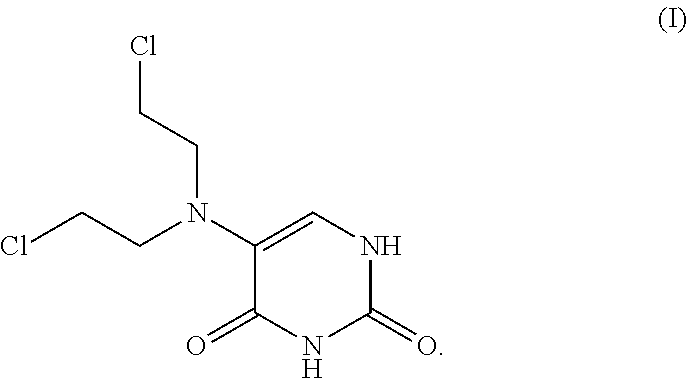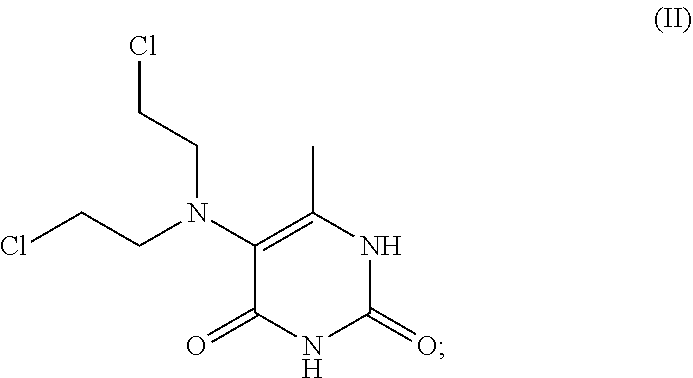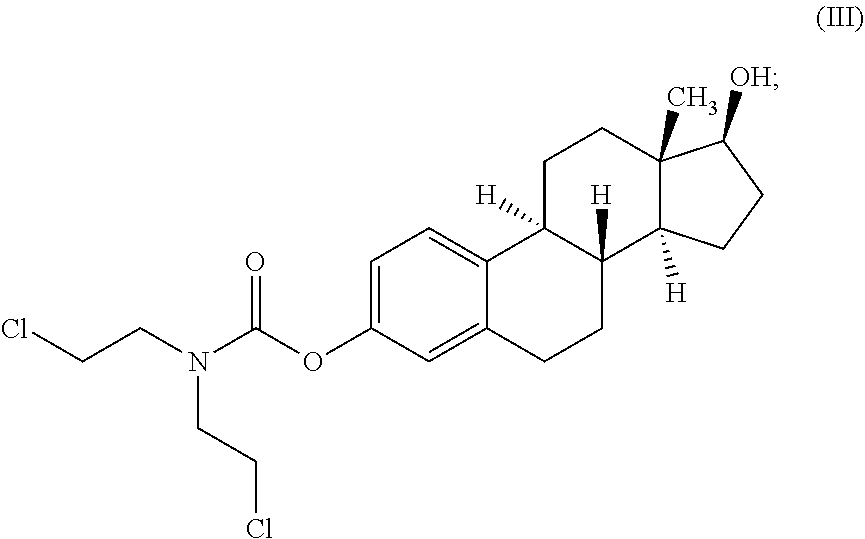Therapeutic benefit of suboptimally administered chemical compounds
a chemical compound and optimal technology, applied in the field of immunological, metabolic, infectious, benign or neoplastic hyperproliferation disease conditions, to achieve the effects of reducing toxicity, improving the utility of chemical agents with suboptimal performance, and improving dose determination and schedul
- Summary
- Abstract
- Description
- Claims
- Application Information
AI Technical Summary
Benefits of technology
Problems solved by technology
Method used
Image
Examples
Embodiment Construction
[0123]This invention relates to novel compositions and methods to improve the utility of chemical agents including uracil mustard or other mustard-based alkylating agents with suboptimal performance for patients with cancer and with other diseases and conditions, including metabolic diseases, immunological diseases, and infectious diseases. The invention describes the novel development of improved pharmaceutical ingredients, dosage forms, excipients, solvents, diluents, drug delivery systems, preservatives, more accurate drug administrations, improved dose determination and schedules, toxicity monitoring and ameliorization, techniques or agents to circumvent or reduce toxicity, techniques and tools to identify / predict those patients who might have a better outcome with a therapeutic agent by the use of phenotype or genotype determination through the use of diagnostic kits or pharmacokinetic or metabolism monitoring approaches, the use of drug delivery systems, novel prodrugs, polyme...
PUM
| Property | Measurement | Unit |
|---|---|---|
| temperature | aaaaa | aaaaa |
| diameter | aaaaa | aaaaa |
| shelf temperature | aaaaa | aaaaa |
Abstract
Description
Claims
Application Information
 Login to View More
Login to View More - R&D
- Intellectual Property
- Life Sciences
- Materials
- Tech Scout
- Unparalleled Data Quality
- Higher Quality Content
- 60% Fewer Hallucinations
Browse by: Latest US Patents, China's latest patents, Technical Efficacy Thesaurus, Application Domain, Technology Topic, Popular Technical Reports.
© 2025 PatSnap. All rights reserved.Legal|Privacy policy|Modern Slavery Act Transparency Statement|Sitemap|About US| Contact US: help@patsnap.com



